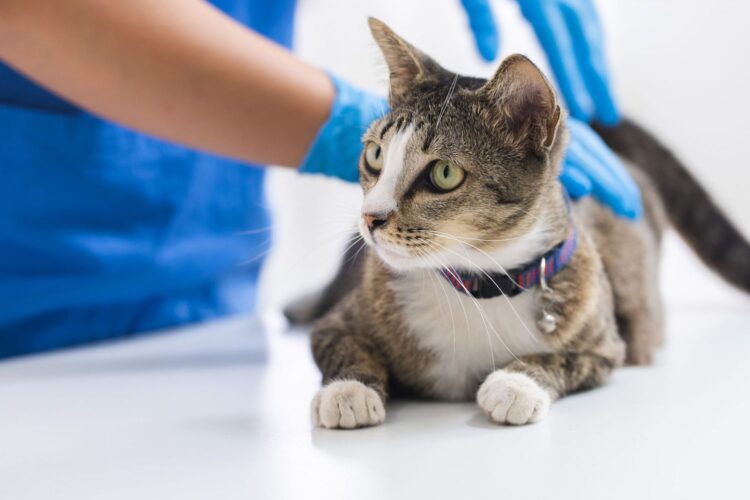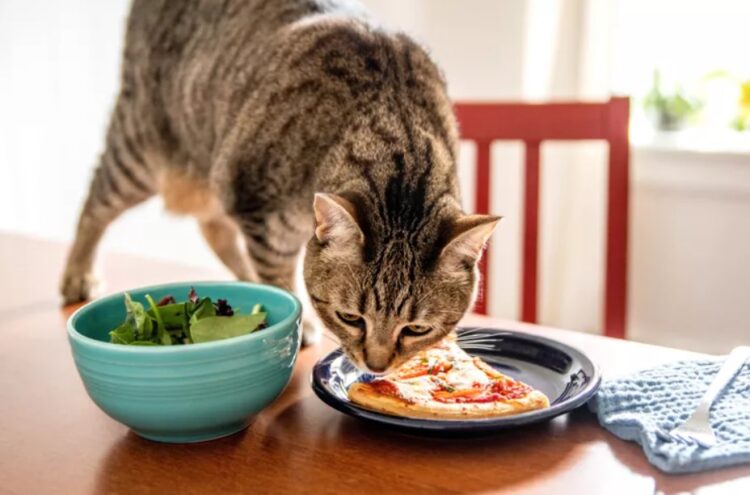Have you noticed your cat won’t stop throwing up, eating little, or even drinking a lot after eating? Perhaps sometimes these signs get worse – or you never notice them at all.
Cat vomit can be upsetting and discomforting. But it’s important to know how you can help your pet so that you both stay comfortable and healthy. First, you must determine what caused the symptoms.
Keep reading to learn more about how to identify cat vomit, what steps you can take, and how to help your cat feel better.
Identifying the Cause of Your Cat’s Upset Stomach
Identifying the cause of your cat’s upset stomach can be a challenge but it’s an essential step in treating the problem. Common causes of a cat throwing up include:
- Hairballs
- Food allergies
- Parasites
- Dietary indiscretion
- Too many hairballs
If your cat is vomiting frequently it could be a symptom of an underlying health condition such as kidney or liver disease. Additionally, stress, anxiety, or motion sickness can also trigger vomiting in cats.
If your cat is exhibiting frequent vomiting, it is essential to consult a veterinarian for a diagnosis and treatment plan. The cat vet may perform a physical examination or blood work to determine the cause of the upset stomach.
In some cases, additional tests such as an abdominal ultrasound, endoscopy, or X-rays may be necessary. Knowing the root cause of your cat’s symptoms is essential to providing them with the appropriate medical care.
Examining the Type of Vomit

Cat vomiting can be a sign of a serious medical problem. Examining the types of cat throw-up can help determine the underlying cause. If the vomit is a clear liquid, it usually means the cat is suffering from an upset stomach, but if it’s bloody, foam-like, or covered in bile, it may signify a more serious medical condition.
Other types of vomit may puncture organs, worms, parasites, or foreign objects like plastic or string. If the vomit is accompanied by coughing, it could be a sign of pneumonia or bronchitis.
It is important to have your cat examined by a veterinarian if it keeps throwing up in order to rule out any serious medical conditions.
What to Do if Cat Won’t Stop Throwing Up
If your cat won’t stop throwing up, there are a few things that you can do to help them feel better. First, offer your cat plenty of fresh, clean water.
Also, if your cat isn’t eating, try mixing a small amount of wet food with their regular dry food. If this does not help, make sure to take your cat to the vet. Your vet can assess the cause of the problem and provide the necessary treatment.
Other measures that can be taken to help a cat throw up include feeding them smaller meals more frequently, avoiding stress as much as possible, and limiting their activity. It is also important to note that if it’s more than a few times in one day or if your cat’s vomiting lasts more than 24 hours, take it to the vet immediately.
Evaluating Your Cat’s Diet and Habits

When it comes to cats throwing up, it is important to evaluate your cat’s diet and habits. Start by monitoring what your cat is eating.
Ask yourself if it is a balanced diet with the right amount of moisture levels and fiber amounts. Too much or too little of anything can lead to cat vomiting. If the diet is okay, you should then take a look at your cat’s lifestyle.
Make sure your cat is getting enough exercise and not eating too quickly. Also, if you notice that your cat is anxious or stressed, consider ways to reduce these issues.
Monitor your cat’s bowel movements and lounge time and make sure you keep their environment clean. This will also help reduce stressors. Lastly, take your cat to the vet if the problem persists. A vet can help determine the cause and get your cat back on track to feeling better.
Choosing a Vet-Approved Treatment Plan
Choosing a vet-approved treatment plan for a cat that won’t stop throwing up is essential. Not treating the underlying cause of the vomiting can result in dehydration, organ failure, or other serious medical conditions.
Obtaining a diagnosis is the first step in developing a plan of action. After determining the cause of the vomiting, the vet can design a tailored treatment plan. This could include changes in diet, dietary supplements, medications, and even surgery if necessary.
Following the vet’s plan will help to ensure a successful recovery. Pathology tests and monitoring of the cat’s condition weight, appetite, and other factors- and regular communication with the veterinarian should be included as part of any approved treatment plan.
By consulting with the vet and determining a vet-approved treatment plan, you can ensure the best medical outcome and reduce the risk of long-term health problems. Look into pet insurance plans that are best fit for your pet’s needs now and gain peace of mind in case of an emergency.
Taking Basic Precautionary Measures

If your cat won’t stop throwing up, it is important to take basic precautionary measures to prevent upset stomachs in the future. This includes feeding your cat a balanced diet that does not include a lot of fatty treats or canned food.
You should also avoid giving the cat human food, as these may contain ingredients that are not well tolerated. Also, feeding your cat only the appropriate amount of food at regular times ensures that they will not become overloaded with food, which can cause it to vomit.
Cats love to chew on things, so it is important to give them appropriate toys and objects to chew on. Finally, ensure that the cat has access to fresh, clean water.
Doing so helps keep them hydrated and prevents dehydration, which can contribute to digestive issues. Taking these basic precautionary measures will help keep your cat healthy and can help prevent upset stomachs in the future.
Know What to Do if Your Cat Vomits Today
If your cat won’t stop throwing up, it is important to take steps to find out what the underlying cause is. Contact a vet as soon as possible to get the necessary testing and treatment options.
Staying on top of your cat’s health is vital to minimizing long-term health risks. Get started today by scheduling an appointment with your vet.
Did you find this article helpful? Visit more of our blogs!
 Hi Boox Popular Magazine 2024
Hi Boox Popular Magazine 2024



